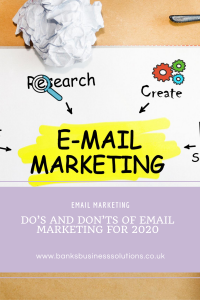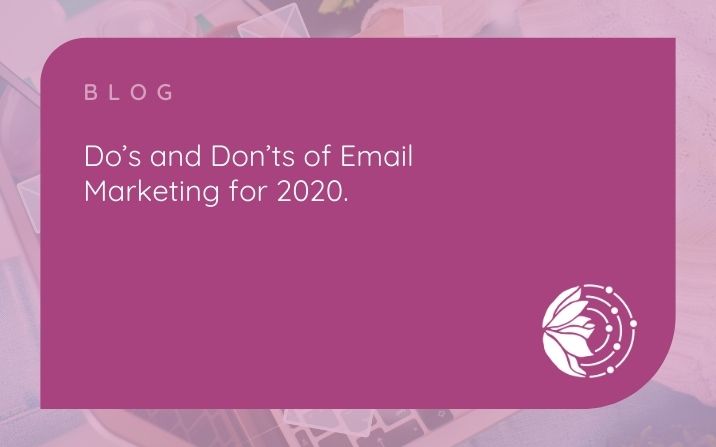Do’s and Don’ts of Email Marketing for 2020
Email marketing is an effective form of marketing with 99% of consumers checking their email every day according to HubSpot, but it is one that has taken a backseat for many people after the introduction of GDPR and the potential perils that included for business owners holding a subscription list full of personal data.
GDPR didn’t bring the end of email marketing like many people feared and knowing the do’s and don’ts you need to follow in 2020 can help you stay on the right side of the law while attracting your ideal customers straight to your door.
Do use an opt form with clear consent
When you create a sign-up form or landing page for your mailing list, is it obvious what people are signing up for? 
A link to your data collection and retention policy is a good idea here along with a brief statement saying that all data is held in compliance with GDPR, you do not sell or share your data with third parties and that they can unsubscribe at any time.
A double opt-is also a good idea. A two-step process where you’re reiterating what they’re signing up for and giving them the chance to change their mind if they so choose can help you prove transparency and informed consent through the sign-up process.
Don’t buy an email list
Even if it claims to be GDPR compliant, it’s 99% likely not to be because most people don’t consent to their data being shared or sold with others.
Some email lists include emails that have been scraped from the internet and compiled together with the claim that GDPR doesn’t matter as the information is in the public domain. While this may be true, you’re only permitted to market to business email addresses, not personal ones, and in this instance, business means a limited company, not a sole trader.
It’s something of a grey area that simply isn’t worth taking the chance over, most people hit the spam button on any unsolicited emails anyway! For further guidance, check out my blog on email subscriber lists and how to avoid getting it wrong.
Do personalise your emails
That doesn’t mean you have type out over a hundred (or more!) different emails to each and every individual on your mailing list. Set up your emails so their name is included and that it feels personal to them – ideally, your perfect customers are on your list so they should feel this anyway if your marketing is hitting the right note with them.
Make sure you look through your list to spot any missed names and segment them away into a smaller list to avoid any embarrassing “dear insert name here” incidents.
Don’t send your emails without testing
The best way to prevent any embarrassing mistakes and typos is to test your emails before unleashing them on your subscriber list. Set up a small segment with your email(s), friends and family willing to give things a once over and let you know where things have gone wrong. You won’t always spot mistakes so the more helpful eyes you can get the better!
Another thing to look out for is scheduled emails containing offers and promotions. Quite often I’ve received emails closely followed by an apology that the offer wasn’t live yet, or wasn’t closing for another few days, etc. Triple check those dates before hitting the schedule button!
Do A/B test your emails
How can you tell that your emails are performing well? If you send one email out, you can track the metrics of opening rates, click-throughs, etc but they don’t really tell you if another approach would work better.
A/B testing is the process of having two emails with slight differences so you can test which ones work best for your audience. Subject lines are a common change to test and see which ones work better for getting your emails read, but it can also be your call to action, design, copy, day of the week it’s sent out, etc.
The trick is to change just one thing, test it and evaluate the results before testing something else.
Don’t forget about mobile devices
One design feature you should always bear in mind is how your email will look on a smaller, mobile screen. Your design may be beautiful on your large desktop monitor but is it the same on your phone?
Around 50% of emails are now read on mobiles and that number is likely to go up in the future, so I recommend designing with small screens in mind as it’s easier for things to scale up than scale down.
There you have it, my simple do’s and don’ts of email marketing in 2020.
If you need any support in setting up your email marketing from sign up forms to automation and segmentation, I’m an experienced MailChimp marketer and I’m here ready to help. Just get in touch with me for a friendly chat to get started.

